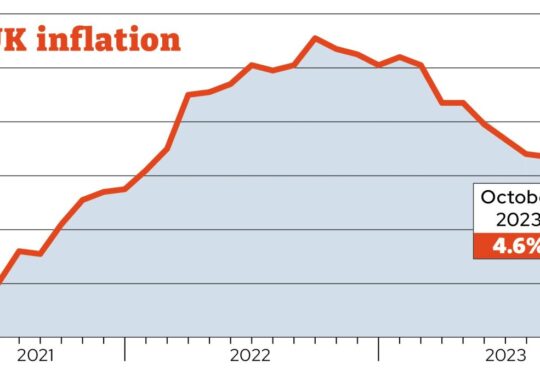Following the global banking crisis that started in 2008, the yield on UK government gilts has been on a steady decline, with the EU referendum in 2016 and the impact of the Covid pandemic in 2020 compounding this decline even further.
However, more recent events both globally and domestically have seen a very sharp reversal in UK government gilt yields, following the Russian invasion of Ukraine in February 2022, which brought about high global inflation and the ill-fated September 2022 “mini”-Budget from former prime minister Liz Truss.
In October 2022, UK government gilt yields briefly reached highs of around 5 per cent – not seen since before the banking crisis in 2008.
Article continues after advert
As outlined in the graph below, UK gilt yields have partially fallen since the highs of October 2022 and have now appeared to stabilised around 3.5 per cent to 4.0 per cent, which is the level they were at 10 years ago.
UK government gilt yields are around 2 percentage points higher than they were this time last year. So, what does this rise in UK government gilt yields over such a short term mean for the UK pension sector in 2023 and beyond?
DB pension schemes
Defined benefit schemes pay a pension to members based on their service and salary while in the scheme. Contributions are paid by members and the scheme’s sponsoring employer, which are invested in one common fund that is used to pay members’ pensions when they reach retirement.
The calculation to place a value on the DB pension built up by members is complicated and based on a number of assumptions. The value is generally highly correlated to UK government gilt yields. When UK government gilt yields are low, the value placed on the DB pension promised to members is high and vice versa.
Until recently, UK government gilt yields had been falling. In March 2020, UK government gilt yields were at record lows and had fallen by as much as 4 per cent since the global banking crisis.
While a 4 per cent fall does not sound a lot, as a rule of thumb, a 1 per cent fall in UK government gilt yields can increase DB pension liabilities by around 20 per cent. So, the impact of falling UK government gilt yields by around 4 per cent over the past 10 years or so has had an immense impact on UK DB pension schemes.
A higher value in DB pension scheme liabilities generally results in an increase in the deficit in those pension schemes, which has to be met by additional contribution from the sponsoring employers of those schemes.
This additional financial burden on employers has meant that many have now closed these schemes to new employees (only 10 per cent remain open to new employees) or closed to all employees (53 per cent of DB schemes are now closed to all employees).








